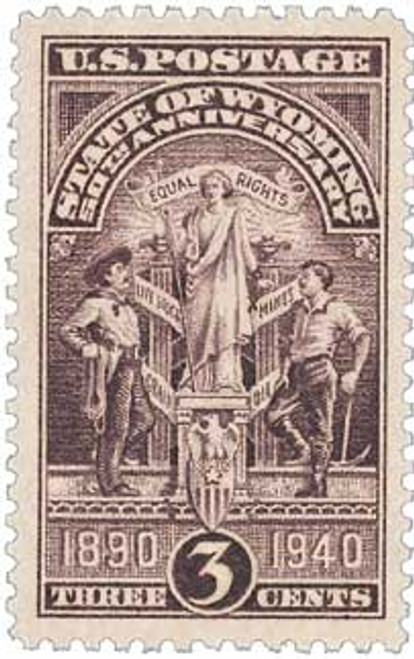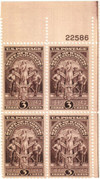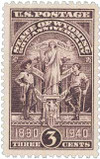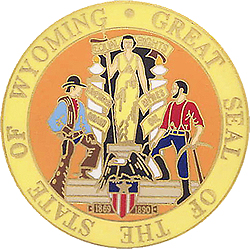
# 897 - 1940 3c Wyoming Statehood
3¢ Wyoming Statehood
City: Cheyenne, WY
Quantity: 50,034,400
Printed by: Bureau of Engraving and Printing
Printing Method: Rotary Press
Perforations: 10.5 x 11
Color: Brown violet
Wyoming Grants Women’s Suffrage
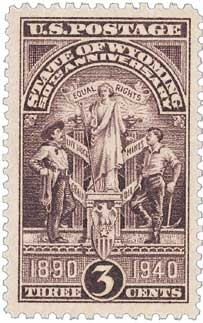
On December 10, 1869, the Wyoming territory became the first government in the US to grant women the right to vote.
Since the 1840s, there was a growing movement to grant women the same rights as men. As early as 1854, the Washington Territory attempted to give women the right to vote but was unsuccessful. Nebraska tried as well in 1856. A bill was even introduced to Congress after the Civil War to give women in all the territories the right to vote, but that failed as well. A similar bill was also brought before Congress in 1868 that would have extended the right to women in all states and territories. In 1869, the Dakota Territory came within one vote of passing a women’s suffrage bill.
Meanwhile, in Wyoming, women’s rights and women’s suffrage were also on the minds of the territory’s government. Earlier in 1869, they had passed laws allowing women to sit in a special area where the lawmakers met. They also passed a law guaranteeing teachers (which were mostly women) would be paid the same whether they were men or women. And they gave married women property rights separate from those of their husbands.
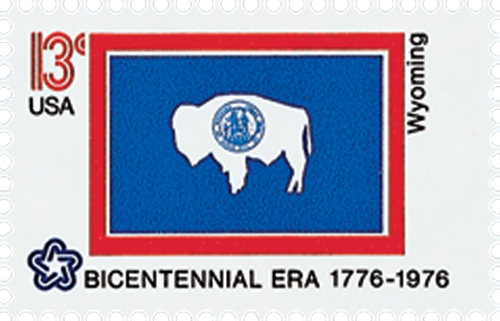
One of the driving forces behind the move to grant women’s suffrage in Wyoming was to help the territory gain good publicity. They also wanted to attract more women to the territory. At the time, there were about six adult men for every adult woman, so they believed granting women the right to vote would encourage them to move there.
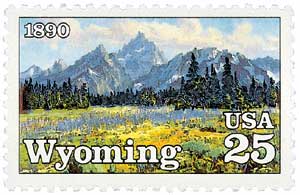
While some of the people behind the bill had good intentions, believing that giving women the vote was the right thing to do, others had more dubious intentions. For some of the bill’s backers, it was a political stunt. They had supported the bill because they believed the governor, a member of the opposing party, would reject it and it would reflect poorly on him. However, the bill passed through the house and Governor John Campbell signed it into law on December 10, 1869.
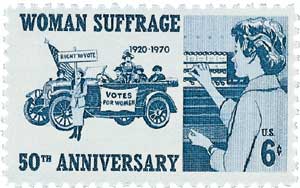
Early the following year, Esther Morris was made justice of the peace, making her the first woman to hold a public office. Later that year, about 1,000 women turned out for their first vote in Wyoming. However, after those elections, the legislature felt that women shouldn’t have had the right to vote and submitted a bill to repeal the law. But governor Campbell vetoed it and they made no further attempts to repeal it.
When Wyoming applied for statehood in 1890, it insisted that it would only be admitted as long as the state’s women retained their right to vote. So that year Wyoming became the first women’s suffrage state. In 1924, Wyoming voters elected Nellie Tayloe Ross as the governor. She was the first woman to achieve that office in the United States. With this history, Wyoming earned the nickname of “The Equality State.”
Click here to read the act that granted women’s suffrage in Wyoming.
3¢ Wyoming Statehood
City: Cheyenne, WY
Quantity: 50,034,400
Printed by: Bureau of Engraving and Printing
Printing Method: Rotary Press
Perforations: 10.5 x 11
Color: Brown violet
Wyoming Grants Women’s Suffrage

On December 10, 1869, the Wyoming territory became the first government in the US to grant women the right to vote.
Since the 1840s, there was a growing movement to grant women the same rights as men. As early as 1854, the Washington Territory attempted to give women the right to vote but was unsuccessful. Nebraska tried as well in 1856. A bill was even introduced to Congress after the Civil War to give women in all the territories the right to vote, but that failed as well. A similar bill was also brought before Congress in 1868 that would have extended the right to women in all states and territories. In 1869, the Dakota Territory came within one vote of passing a women’s suffrage bill.
Meanwhile, in Wyoming, women’s rights and women’s suffrage were also on the minds of the territory’s government. Earlier in 1869, they had passed laws allowing women to sit in a special area where the lawmakers met. They also passed a law guaranteeing teachers (which were mostly women) would be paid the same whether they were men or women. And they gave married women property rights separate from those of their husbands.

One of the driving forces behind the move to grant women’s suffrage in Wyoming was to help the territory gain good publicity. They also wanted to attract more women to the territory. At the time, there were about six adult men for every adult woman, so they believed granting women the right to vote would encourage them to move there.

While some of the people behind the bill had good intentions, believing that giving women the vote was the right thing to do, others had more dubious intentions. For some of the bill’s backers, it was a political stunt. They had supported the bill because they believed the governor, a member of the opposing party, would reject it and it would reflect poorly on him. However, the bill passed through the house and Governor John Campbell signed it into law on December 10, 1869.

Early the following year, Esther Morris was made justice of the peace, making her the first woman to hold a public office. Later that year, about 1,000 women turned out for their first vote in Wyoming. However, after those elections, the legislature felt that women shouldn’t have had the right to vote and submitted a bill to repeal the law. But governor Campbell vetoed it and they made no further attempts to repeal it.
When Wyoming applied for statehood in 1890, it insisted that it would only be admitted as long as the state’s women retained their right to vote. So that year Wyoming became the first women’s suffrage state. In 1924, Wyoming voters elected Nellie Tayloe Ross as the governor. She was the first woman to achieve that office in the United States. With this history, Wyoming earned the nickname of “The Equality State.”
Click here to read the act that granted women’s suffrage in Wyoming.

